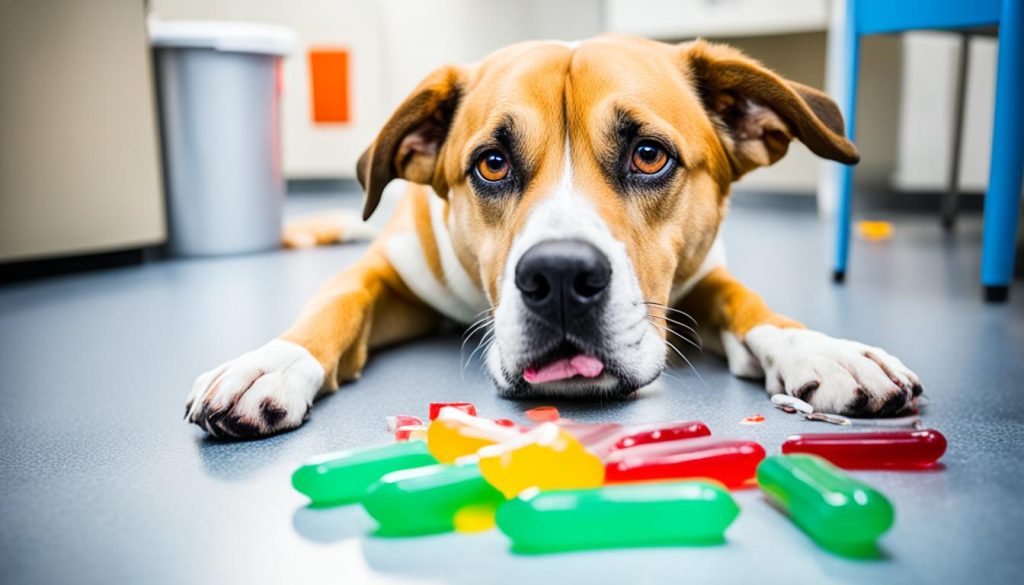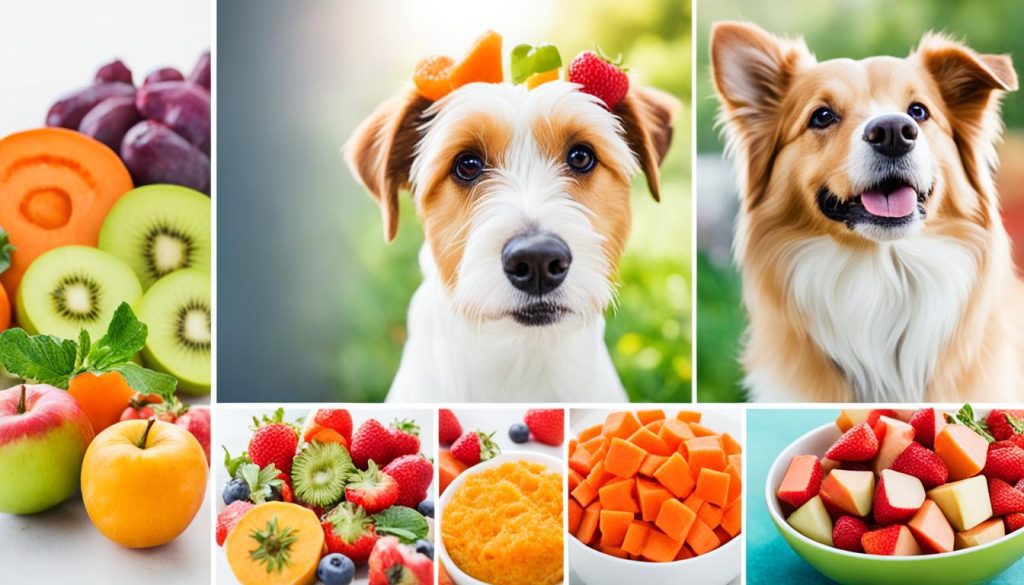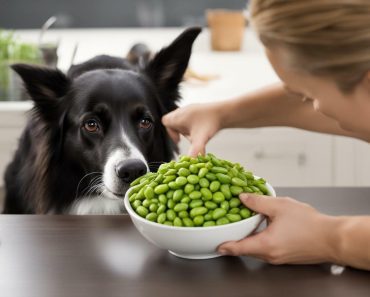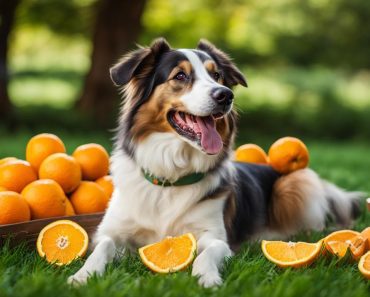I’ve often wondered if my furry friend can indulge in the sweet, jiggly delight of jello. After all, who doesn’t love a refreshing dessert on a warm day? However, when it comes to dogs and jello, I had to find out if it was safe or if I should keep it off their menu.
Can Dogs Eat Jello? Yes, they can. But it is not recommended and is best avoided.
Jello, with its tantalizing fruity flavors and wobbly texture, may bring back fond memories of childhood for us humans. But unfortunately, it’s not a treat that our canine companions should partake in. While it may be tempting to share with them, there are several reasons why jello is not suitable for dogs.
Understanding What Jello is Made Of
Jello is a popular dessert enjoyed by many, but have you ever wondered what exactly is in it? Let’s take a closer look at the ingredients that make up this jiggly treat.
The main component of jello is gelatin, which gives it its unique texture. Gelatin is derived from animal collagen found in bones and connective tissues. It is processed into a powder form and then mixed with water to create the gel-like consistency of jello.
In addition to gelatin, jello also contains sugar, artificial flavors, and artificial sweeteners. The amount of sugar in jello can vary depending on the flavor and brand, but it is generally quite high. This high sugar content can be detrimental to the health of dogs if they consume large quantities of jello.
Artificial sweeteners, such as those found in sugar-free jello, can be particularly dangerous for dogs. One common artificial sweetener, xylitol, is highly toxic to dogs and can lead to low blood sugar and liver failure. It is crucial to check the ingredients of jello products before giving them to dogs to ensure they are safe.
Overall, while jello may be a tasty treat for humans, it is important to remember that it may not be suitable for our furry friends. If you want to share a treat with your dog, it is best to opt for dog-friendly alternatives that are free from harmful ingredients.
- Gelatin is the main ingredient in jello, derived from animal collagen.
- Jello contains high levels of sugar, which can be harmful to dogs if consumed in large amounts.
- Artificial sweeteners, such as xylitol, commonly found in sugar-free jello, can be toxic to dogs.
- It is important to check the ingredients of jello products before giving them to dogs to ensure their safety.
Why Jello is Unsafe for Dogs
When it comes to our furry friends, we always want to ensure their health and well-being. That’s why it’s important to understand why jello is unsafe for dogs and the risks it poses to their overall health.
Dangers of Jello for Dogs:
- Artificial sweeteners like xylitol, which can be found in some jello products, are toxic to dogs. Consumption of xylitol can potentially lead to low blood sugar and liver failure in dogs.
- The high sugar content in jello can contribute to weight gain, dental issues, and diabetes in dogs.
- Additives and preservatives present in jello can cause digestive upset and allergic reactions in dogs, leading to discomfort and potential health issues.
Given these dangers, it is crucial to keep jello away from our canine companions. While a small taste may not immediately harm them, regular consumption or larger quantities can have serious consequences.
Note: If you suspect that your dog has ingested jello or is experiencing any adverse effects, it is important to seek veterinary assistance immediately.
Now that we understand the risks associated with jello, it is essential to explore safe alternatives and prioritize our dogs’ health and well-being.
Signs of Jello Poisoning in Dogs
If a dog consumes jello, there are certain signs of poisoning to watch out for. These may include:
- Vomiting
- Diarrhea
- Increased thirst
- Restlessness
- Lethargy
- Seizures
If you suspect your dog has ingested jello and is experiencing these symptoms, it is important to seek veterinary assistance immediately. The vet will be able to provide the necessary treatment and care to prevent any further complications.

Safe Alternatives to Jello for Dogs
Instead of giving jello to dogs, there are safer alternatives available. One option is to make homemade gelatin treats using dog-friendly ingredients. Simply mix plain unflavored gelatin with chicken broth or fresh fruit to create a tasty and nutritious treat for your furry friend. Not only are these homemade treats free from harmful additives, but they also allow you to customize the flavors based on your dog’s preferences.
If you prefer a convenient store-bought option, consider natural fruit gelatin made specifically for dogs. These gelatin treats are specially formulated to meet the nutritional needs of dogs and are free from any harmful ingredients found in jello. They provide a delightful flavor and texture that dogs love, making them a great alternative to traditional jello.
When choosing alternatives to jello for dogs, it is important to prioritize their health and well-being. By opting for dog-friendly gelatin treats or natural fruit gelatin, you can ensure that your furry companion enjoys a safe and delicious treat without any risks to their health.

Ensuring Your Dog’s Safety and Well-being
When it comes to keeping your furry friend safe from jello and other potentially harmful foods, there are a few important steps to take. Here are some dog safety tips to help prevent jello ingestion and ensure your dog’s well-being:
- Keep jello and other dangerous foods out of your dog’s reach: Dogs are known for their curiosity and ability to get into things they shouldn’t. To prevent your dog from getting their paws on jello, make sure it is stored securely in a closed container or in a location that is inaccessible to your dog.
- Train your dog to avoid eating from your plate: It’s essential to teach your dog proper table manners and discourage them from begging or attempting to snatch food from your plate. By establishing this boundary, you can help prevent accidental jello ingestion.
- Check food labels for potential hazards: Whenever you’re considering sharing food with your dog, it’s crucial to read the ingredients carefully. Avoid foods that contain artificial sweeteners like xylitol, as this can be toxic to dogs.
If you suspect that your dog has ingested jello or any other food containing artificial sweeteners, it’s important to be aware of the signs of xylitol poisoning. These can include an upset stomach, vomiting, weakness, seizures, and tremors. If you observe any of these symptoms, it’s crucial to seek immediate veterinary attention for your dog’s safety and well-being.
By following these dog safety tips and being vigilant about the foods you expose your furry friend to, you can help keep them safe from the risks associated with jello ingestion and ensure their overall health and happiness.
Conclusion
It is important to prioritize your dog’s health and well-being when it comes to their diet. While jello may be a tempting treat, it is not safe for dogs to eat. The ingredients in jello, such as artificial sweeteners, high sugar content, and additives, can have negative effects on their health. Feeding jello to dogs can lead to digestive issues, weight gain, and even toxic reactions.
Instead of giving jello to dogs, it is advisable to opt for healthier alternatives that are specially made for them. Homemade gelatin treats using dog-friendly ingredients, like plain unflavored gelatin and natural flavors, can be a great option. You can also consider natural fruit gelatin made specifically for dogs, which provides a tasty and nutritious treat without the harmful additives found in jello.
Remember to keep jello and other potentially harmful foods out of your dog’s reach. Train them to avoid eating from your plate, and always check the labels of foods for any potential hazards. If you suspect your dog has ingested jello or any food containing artificial sweeteners, be aware of the signs of xylitol poisoning and seek immediate veterinary attention if necessary.






